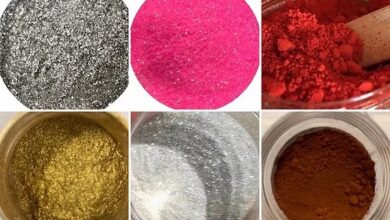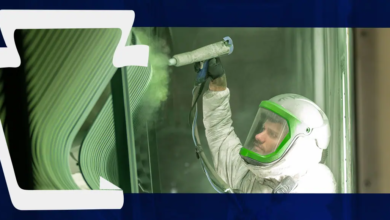Testosterone Replacement Therapy in Canada

Introduction
Testosterone Replacement Therapy (TRT) has become an increasingly popular treatment for men dealing with low testosterone levels, also known as testosterone deficiency. This guide dives deep into what TRT is, how it works, and what you need to know before considering it. Whether you’re experiencing fatigue, low libido, or muscle loss, understanding testosterone therapy can help you make informed choices about your health.
What is Testosterone Replacement Therapy?
Testosterone Replacement Therapy is a treatment for men with low testosterone levels, a condition often referred to as hypogonadism. As men age, or due to certain medical conditions, testosterone production can drop below healthy levels. TRT helps bring testosterone levels back to normal through methods like injections, patches, or topical gels.
For men suffering from the effects of low testosterone, TRT can make a big difference in daily life. It’s used to restore energy, improve libido, and enhance muscle mass. But like any medical treatment, it’s important to understand how it works and whether it’s the right option for you.
Recognizing the Symptoms of Low Testosterone
The symptoms of low testosterone are often mistaken for the normal signs of aging, but they can severely impact your quality of life. Common symptoms include:
- Low libido or a decrease in sex drive
- Erectile dysfunction
- Fatigue or feeling tired all the time
- Loss of muscle mass
- Mood changes such as irritability or depression
If you’re noticing these symptoms, it’s a good idea to get a blood test to check your testosterone levels. TRT can help improve these issues if low testosterone is the cause.
Who Should Consider TRT?
TRT is generally recommended for men who have been diagnosed with low testosterone through blood tests and are experiencing symptoms that interfere with daily life. It’s particularly beneficial for men with hypogonadism, a condition where the body doesn’t produce enough testosterone due to issues with the testes, pituitary gland, or hypothalamus.
However, not every man with low testosterone needs TRT. For example, men who have slightly low levels but no symptoms may not benefit from the treatment. And for those with normal testosterone levels, using TRT can lead to unwanted side effects like infertility or even heart problems.
How Does Testosterone Replacement Therapy Work?
TRT involves boosting your body’s testosterone levels through different delivery methods. Here are the most common ways it’s administered:
- Injections: The most popular form of TRT is testosterone cypionate injections, which are usually administered once every 1-2 weeks. These injections help stabilize testosterone levels over time.
- Topical Gels: Applied daily, testosterone gels allow for a more consistent release of the hormone but require more frequent applications.
- Pellets: These are implanted under the skin and release testosterone over a period of months.
Each method has its pros and cons, and the choice depends on personal preference, convenience, and how your body responds to treatment.
Potential Risks and Side Effects of TRT
While TRT can greatly improve the quality of life for men with low testosterone, it’s not without risks. Some of the potential side effects include:
- Hair loss
- Acne and oily skin
- An increase in red blood cells, which can elevate the risk of cardiovascular problems
- Infertility
- An increased risk of developing prostate cancer in some men
Because of these risks, it’s essential to monitor your health through regular blood tests. This helps track your testosterone levels, check for potential side effects, and adjust your dosage if necessary.
How is TRT Managed in Canada?
In Canada, TRT is strictly regulated by Health Canada, which oversees the safety and efficacy of all testosterone products. To begin TRT, you’ll need to see a healthcare provider who will assess your symptoms and perform blood tests to confirm low testosterone levels.
Some clinics now offer online consultations, which can make it easier to start TRT from the comfort of your home. However, it’s crucial to ensure that any treatment you receive is medically supervised to avoid the risks of improper dosing or unsupervised treatment.
Costs of TRT in Canada
The cost of testosterone replacement therapy can vary based on the type of treatment you choose. Injections tend to be more affordable, while topical gels and pellets can be more expensive due to the convenience they offer.
While some insurance plans may cover the costs of TRT, it’s worth discussing the financial aspects with your healthcare provider during your consultation. Knowing the costs upfront helps you plan for ongoing treatment, as TRT is typically a long-term commitment.
How TRT Impacts Libido and Sexual Health
One of the most significant reasons men turn to TRT is to address problems with libido and sexual health. Low testosterone can lead to reduced libido, difficulties with erections, and lower overall sexual satisfaction. By restoring testosterone levels, TRT can help improve these issues, bringing back not just sexual function but also confidence and overall well-being.
However, TRT isn’t a fix for every sexual health issue. Conditions like erectile dysfunction can sometimes be linked to other factors such as stress, diabetes, or heart disease, so it’s important to talk with your doctor to rule out other causes.
Can TRT Help with Muscle Mass and Strength?
Testosterone is key for maintaining muscle mass and physical strength. As men age, or when testosterone levels dip, they often notice a loss of strength and difficulty building or retaining muscle. TRT can help reverse this by promoting the body’s natural muscle-building abilities, especially when combined with a consistent exercise routine.
That said, it’s important to remember that TRT is not the same as using anabolic steroids. TRT is intended to bring testosterone back to normal levels, whereas steroids involve higher doses and can have severe side effects.
Are There Alternatives to TRT?
While TRT is effective for many men, it’s not the only option available. Some men can improve their testosterone levels through lifestyle changes like:
- Increasing physical activity
- Improving diet
- Reducing stress levels
Other medical alternatives include human chorionic gonadotropin (hCG) or gonadotropin-releasing hormone (GnRH) therapies, which stimulate the body’s own testosterone production.



